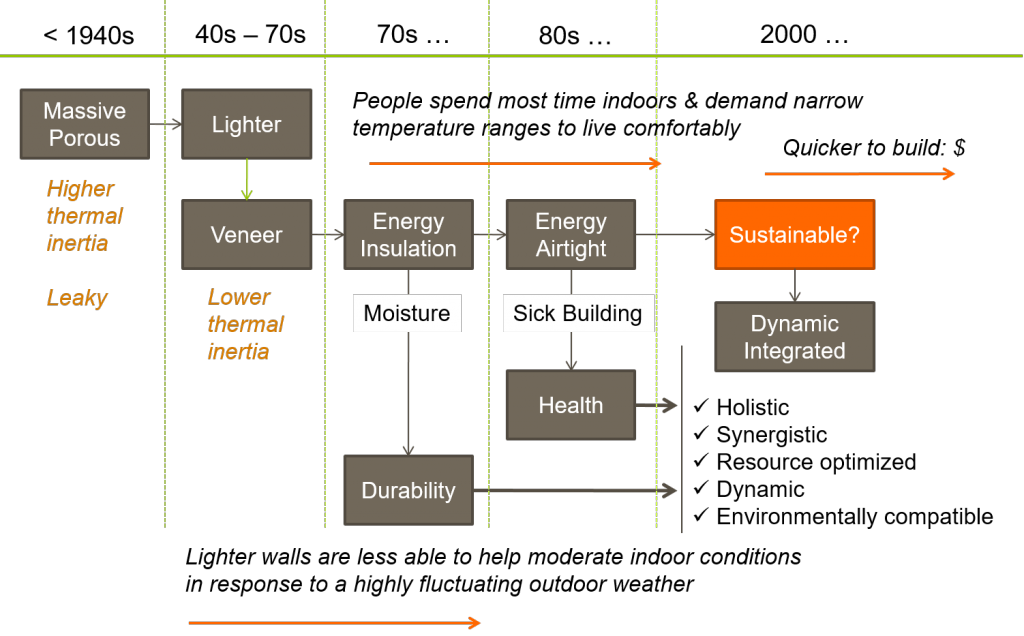Goal – Fenestration is the weakest component of the building enclosure, responsible for a large portion of the energy loss/gain, condensation, and air leakage. However, the impacts of fenestration on thermal comfort have been largely ignored. Consequently, building occupants will likely rely on energy-intensive solutions to mitigate discomfort from windows. The goal of this project is to investigate methods and tools to help practitioners evaluate the impacts of fenestration on thermal comfort and energy performance, and use this knowledge for windows selection, and to plan and analyze no/low-energy design strategies to maintain thermal comfort.
Questions:
- What indoor temperatures are people likely to require at home in winter and summer?
- Can a proposed design provide the required indoor temperatures without, or with minimal, mechanical heating and cooling?
- If thermal simulation or experience suggest that the design cannot satisfy those temperatures, how can the design be adjusted particularly with regard to building form and orientation, window design, shading, enclosure insulation, thermal mass, and passive technologies so that comfort can be obtainable?
Publications:
- Bean R and Mora R (2018). Prioritizing thermal comfort for home: a case study in using Standard 55 for a residential building. ASHRAE Journal, September 2018. Prioritizing thermal comfort for homes – Bean-Mora ASHRAE Journal Sep 2018

